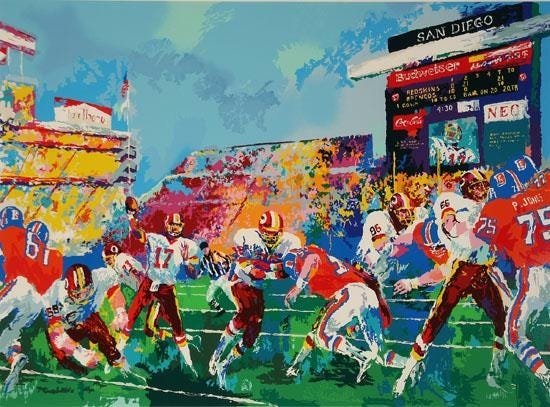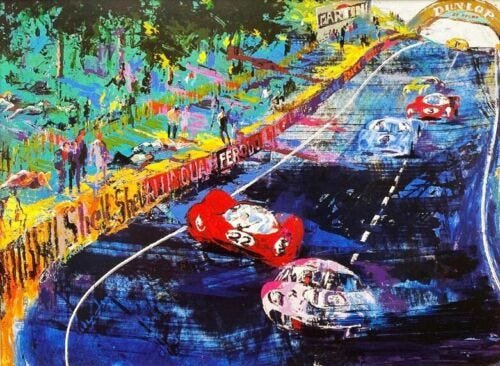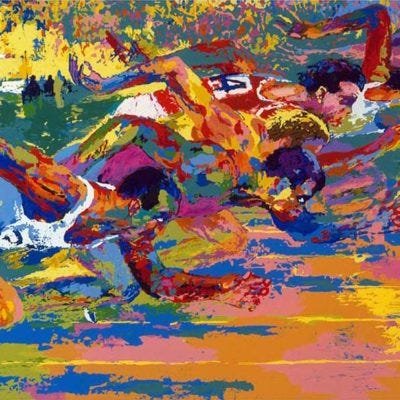Rishad Tobaccowala: Future=Sports
The Future Does Not Fit in the Containers of the Past.
A few months ago, I was connected to Dr. Sascha L Schmidt the Director of the Center for Sports and Management at WHU – Otto Beisheim School of Management which is a leading German business school in Dusseldorf.
Dr Schmidt began his career at McKinsey and worked on a start-up before combining his hobby and passion for sports with his job. Today he is one of the pioneering thinkers and researchers at the confluence of sports and technology. He also lectures at MIT and is an affiliate professor at Harvard and is the editor of 21st Century Sports: How Technologies Will Change Sports in the Digital Age.
Over the past few weeks, we have worked together on two projects. Dr Schmidt asked me to contribute a new chapter to the updated edition of 21st Century Sports, titled Sports in the Third Connected Age, and we spoke at length about where business, sports, technology, and the future intersect for What Next?, the podcast I host. (Listen to it here or see more below)
Over these weeks, it dawned on me that one way to both understand the future, to excite people about the future, and to re-imagine the future is to follow the future of sports, which is far more approachable to most people than the future of technology.
Here are five ways that sports are shapeshifting that are directly applicable to every individual and business alike.
1.The Great Integration.
Sports and entertainment were always integrated and today it is live sports that dominate entertainment and, in many ways, is the heartbeat keeping linear television alive.
Sports do not just drive television. Now, television resurrects and gives new life to sports as seen in Netflix’s massively popular Drive to Survive series.
Nielsen found that 34% of Netflix viewers became fans of F1 racing after watching the series. Another 30% said they understood the sport more, and 29% said they felt more engaged with the sport.
Sports and television have been intertwined since Michael Jordan fused fashion with sports by dressing in bespoke suits as he went to and from the locker room in Chicago 25 years ago.
Since then, fashion has weaved its way into every aspect of sports as illustrated when the World Cup trophy that was handed to Lionel Messi was delivered in an LVMH case.
If fashion is a form of identity, so are our sports allegiances. Aside from Harley Davidson, most fans tattoo their teams and not brand logos on themselves.
Sports, fashion, and social media make for a quantum force of congruence and re-enforcement.
Mark Shapiro, the CEO of Endeavor, recently noted the intersection between sports, fashion, and new media when he said, “In the era of social media, when Instagram moves product and the camera is always on, the legend gets made on the field. But every other waking moment is an image-making performance about what you are wearing, the products you use and how that gets shared.”
To understand the future of media, business, fashion, and much more follow the future of sports! This way it is easier to explain to Board Rooms who may be less passionate about technology than sports to open their eyes to the future and open their pocketbooks to fund the future. Sports helps people understand why the threats and opportunities to a business come from adjacent areas which intersect and combine like fashion and sports.
2. Only the Schizophrenic Will Survive.
Most businesses struggle to ensure that they meet their numbers, keep true to their brands, and focus on their roots while simultaneously enabling their future, re-imagining brands, and finding new wings. It is never either/or but both/and.
It is the schizophrenia of balancing today and tomorrow versus being paranoid about the future or remaining rooted in some psychological fixation on the past which creates long term success.
Sports has grown, surged, adapted, and morphed but has worked hard to remain conservative, true to history, respectful of legacy.
Rules and governing bodies are strict but adaptable as new technologies from lighter equipment, stronger materials, and other innovations change the contour of sports, including a world where fans expect more, faster, and quicker.
If one looks at the highest levels of cricket, which began as five-day affairs with white clothed players and intermittent breaks for tea and lunch, one sees these “Test” matches between countries continue. Now, cricket has taken the world by storm and IPL cricket in India has become a fast-growing sport.
To understand how to take our company, brand, and ourselves into the future by balancing today and tomorrow, risk and reward, roots and wings, we can learn from how different sports are adapting to the future. Translating their moves to our industry allows for examples but also much easier translation and buy-in.
3. The Future is Global.
Sports is the canary in the coal mine that reminds us that globalization is here to stay.
Sports, entertainment, and food are three human desires and needs that have been turbocharged with advances in communication and other technologies.
Advances in travel have globalized food and advances in communication and technology have globalized entertainment (the biggest shows in the US on Netflix are often from countries outside the US, and many of the hits on Spotify today are from Latin America).
Communication and technology have truly turbocharged sports by bringing cricket and F-1 sports to the US and taking NBA and NFL basketball to Europe and other areas.
Just as importantly, 6.5 billion mobile phones and the Internet have created a constantly connected and engaged global fan base. While there are some small exceptions, sports are the one content type that is not censored or edited around the world.
Any business or talent that questions globalization (a multi-polar globalization with many centers of power versus just the West) just needs to look at the success of sports and the focus that each sport is trying to globalize itself.
4.The Triangle Rules!
There is no silver bullet in business because every business has three core constituencies that must be listened to and served.
The customer/consumer is the first, management/shareholders are the second, and employees/suppliers are the third.
No business can endure without finding a way to balance these needs as they move into the future.
Skewing too heavily in only one direction leads either to bankrupt companies, destroyed brands, or an inability to attract and retain talent.
Sports franchises continuously work out ways to balance the fan, the player, and the owners' needs with a plethora of different rules, salary caps, and more.
To understand how to balance, weigh, and adapt to the changing needs and circumstances of the three key constituencies as one’s industry changes, look no further than different sports leagues to learn from their successes and failures.
5. Reset. Resurrect. Reimagine.
Every athlete works to reset continuously through feedback and iterative improvement.
Many of those real time and constant feedback loops are now becoming available outside of sports due to copious amounts of real time data and our instrumented selves and dashboards. Using this information, we all need to learn the value of resetting each time we start a project from the learnings of what worked and what did not from the past.
As AI and other technology spreads, we can learn from sports leagues, which have pioneered many of these technologies from the Oakland A’s of Moneyball fame to chess players integrating computers into their training.
Athletes lose much more often than they win and need to resurrect themselves from defeat.
Similarly, today many companies find themselves threatened with potential defeat by new entrants, new technologies, and the new needs of the people they serve. The ability to re-invigorate, refresh and reboot is key to success in these fast-changing times.
Finally, technology is forcing Sports to re-imagine not just each sport but what sport is.
E-Sports of today will morph into new types of sports in an AR/VR world.
Ownership of sports and creation of leagues may change with Blockchain and DAO’s.
We will soon have virtual players playing virtual games in virtual worlds which we will all watch virtually.
Sports have shown that anything is possible if one is willing to balance today and tomorrow, address needs of different constituencies, be open to incorporate and blend parts of other industries, never lose the focus on globalization, and continuously measure to reset, resolve to resurrect when down and re-imagine what can be!
The future is sports.
Artwork by LeRoy Neiman
March 14, 2023





